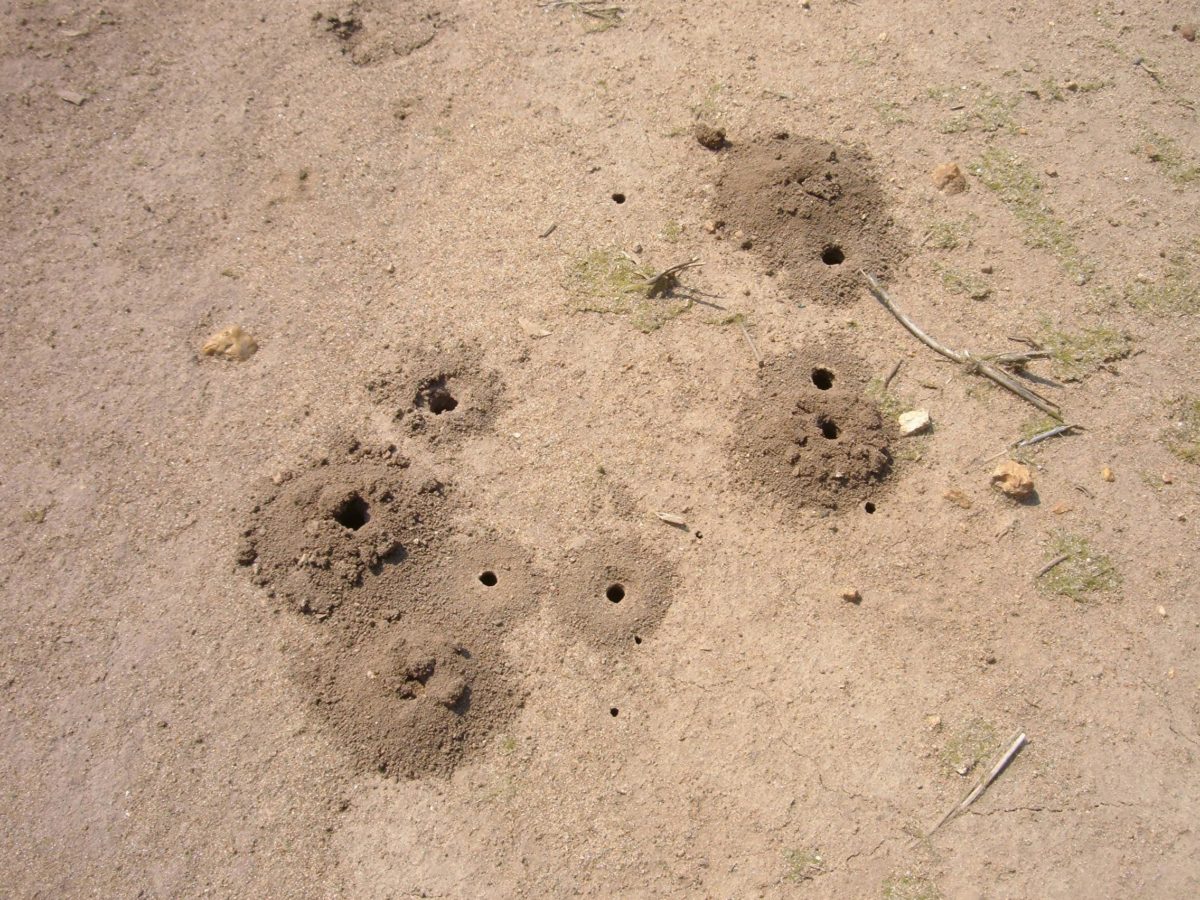Perhaps the most underdeveloped aspect of bee culture is the management and conservation of our short-tongued bees—most of which are solitary subterranean nesters. Vast numbers of Halictid, Andrenid, and Colletid bees range the Earth—leading hidden lives played out in small dark tunnels excavated in cliff faces, barren desert ground, or beneath rock surfaces. Few people have attempted to quantify the global populations of these bees or the value they have as pollinators of wild and cultivated plants. But without a doubt our dependence on them is enormous.
Despite our indifference, and even occasional hostility, these animals constitute the vast majority of the bee species—around 70 percent in fact. The lifecycle of these bees often mirrors that of solitary, aboveground cavity-nesting bees. Typically a single female constructs and provisions a nest, lays an egg, and seals off the chamber where her offspring will develop alone. Unlike her aboveground counterparts, the ground-nesting bee must excavate an elaborate nest chamber with a single tunnel opening to the surface (Figure 9.3) and a series of lateral tunnels leading to a dozen or more individual brood chambers. In some cases these tunnels may extend several feet below ground, and may be lined with glandular glue-like secretions that prevent the walls from collapsing when flooded. Often the only aboveground sign of all this work is a pile of excavated soil, or tumulus (resembling an ant mound).

The countless environmental factors that make a particular site appealing to a particular species are unknown, but where they are found, productive spots may contain multiple nests per square foot— comprising aggregations of thousands of nesting females. The great model for ground-nesting beekeeping is the alkali bee (see page 94). While many of the management practices associated with the alkali bee are species specific, some of those principles may transfer to the management of other bees.
The most basic (and obvious) requirement is the need for a bare soil surface that is protected from regular tillage and motor vehicle traffic (including ATVs). Loose, friable, and sandy soils that are easy to excavate are especially preferred by many ground-nesting bees. The required amount of soil moisture varies between species, with some bees preferring dry, fast-draining soils, while others tolerate seasonal flooding. Many species prefer south-facing, or otherwise sun-exposed areas.
Several types of artificial nest sites can be created with minimal effort. The first is simply to create and maintain bare patches of ground adjacent to productive floral sources. A slightly more involved, but possibly more productive nest site can be created with small mounds of packed sand or agricultural lime. A more elaborate nest site that resembles a cliff face can be created by constructing a stone wall, with soil packed between the individual stones.
A very productive nest site for ground-nesting bees, but one that is difficult to create artificially, is the soil-covered root mass of wind-fallen trees. Such natural sites may be of value for the acquisition of bee larvae to “seed” new, artificial nests (as is done with the alkali bee).
